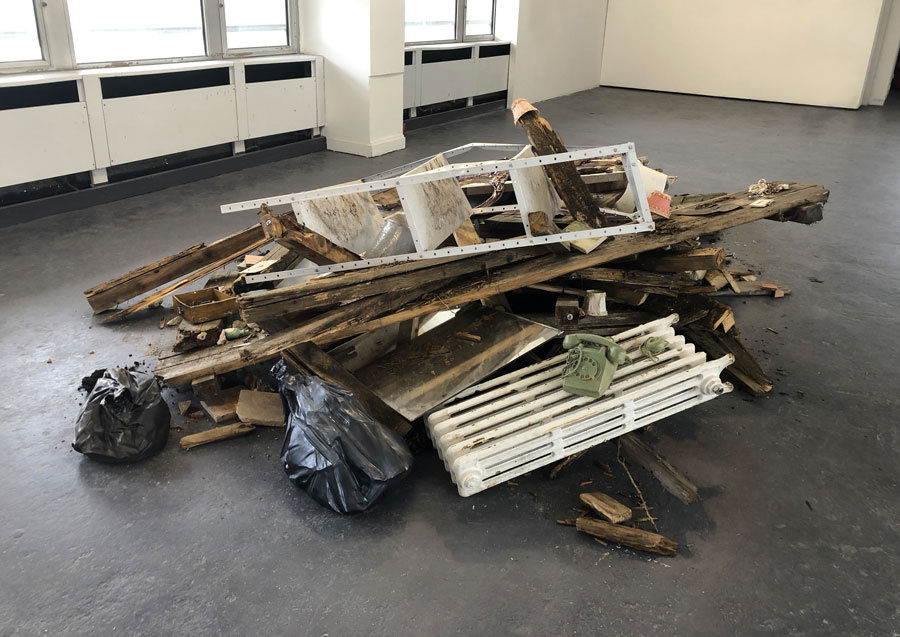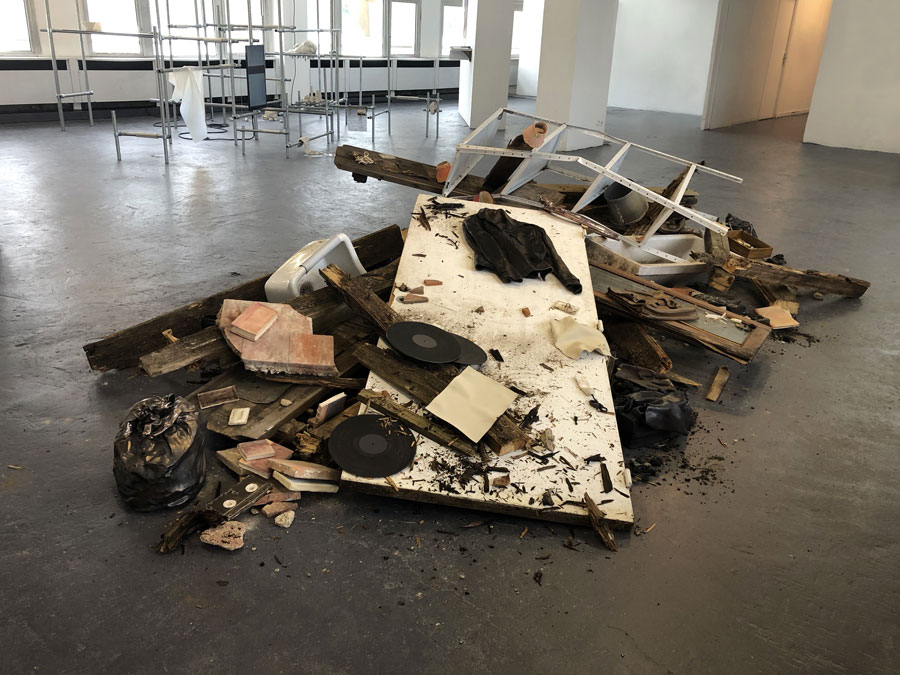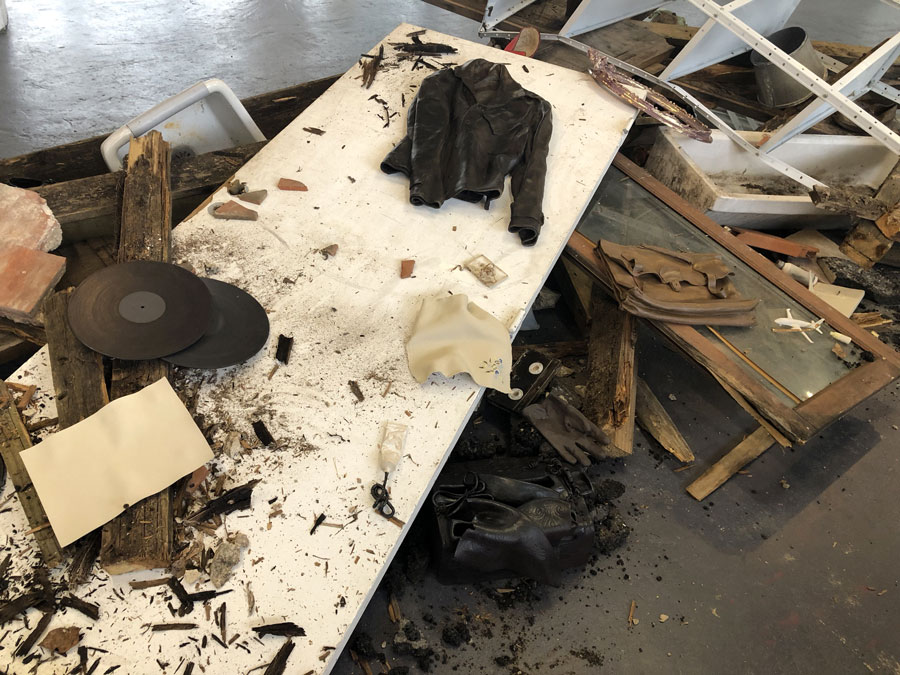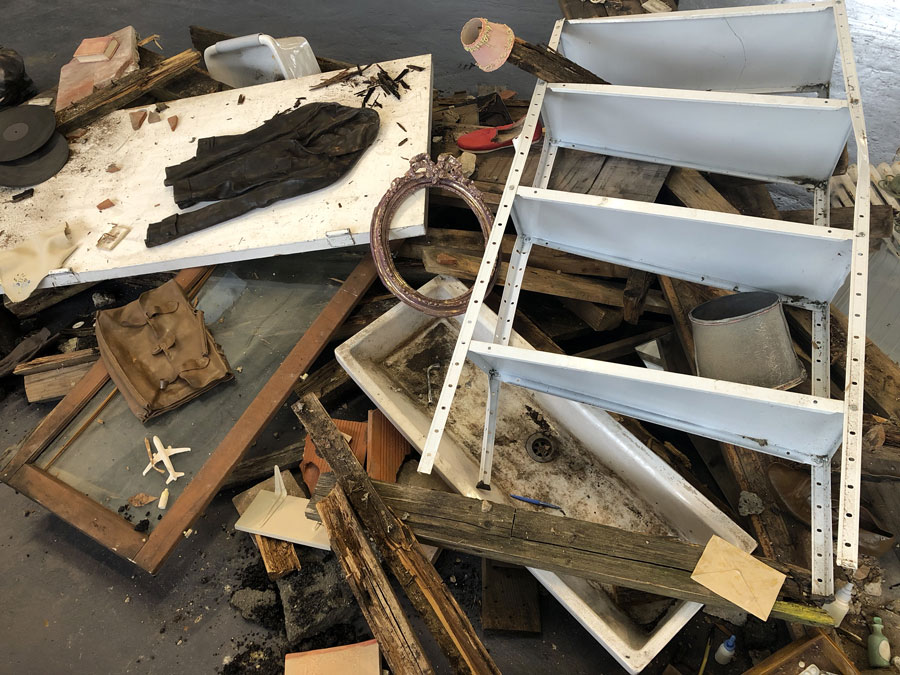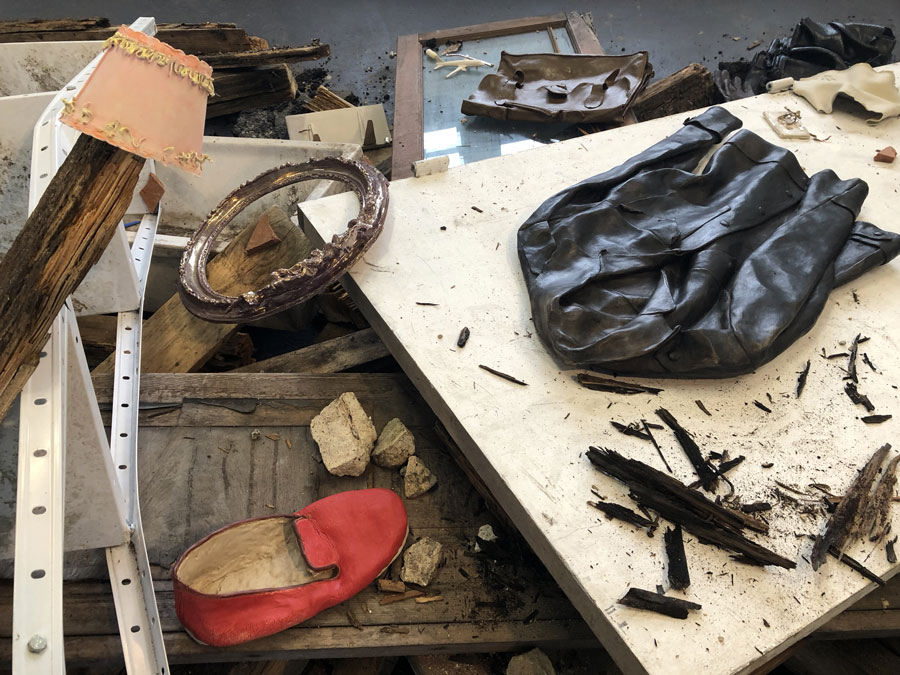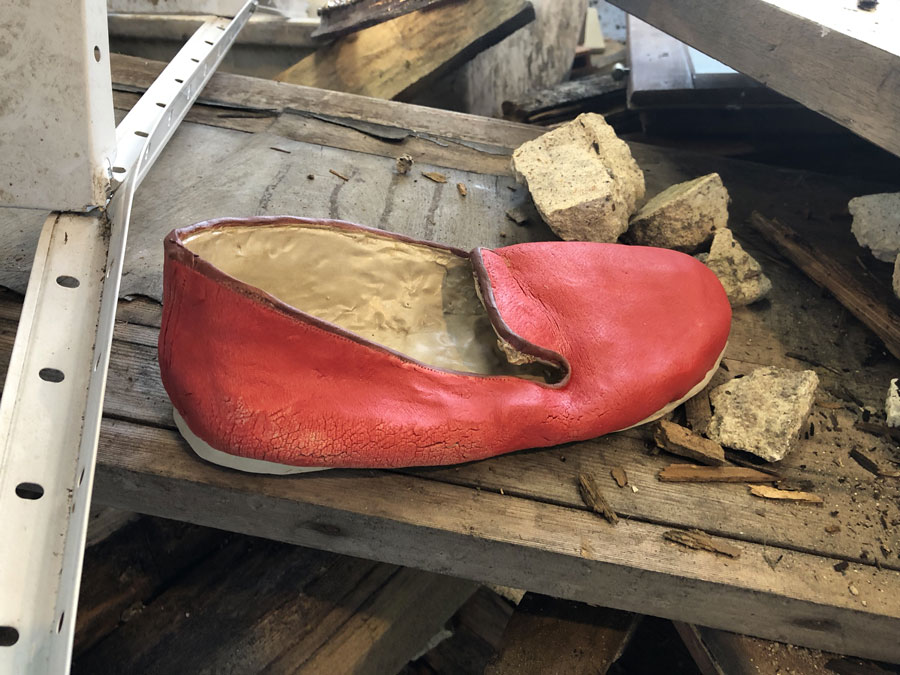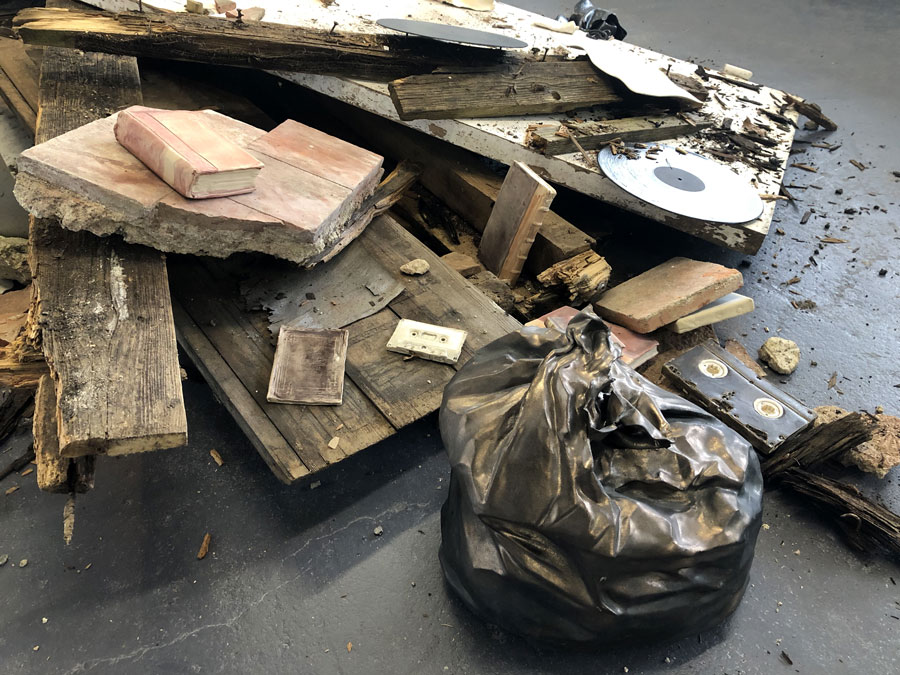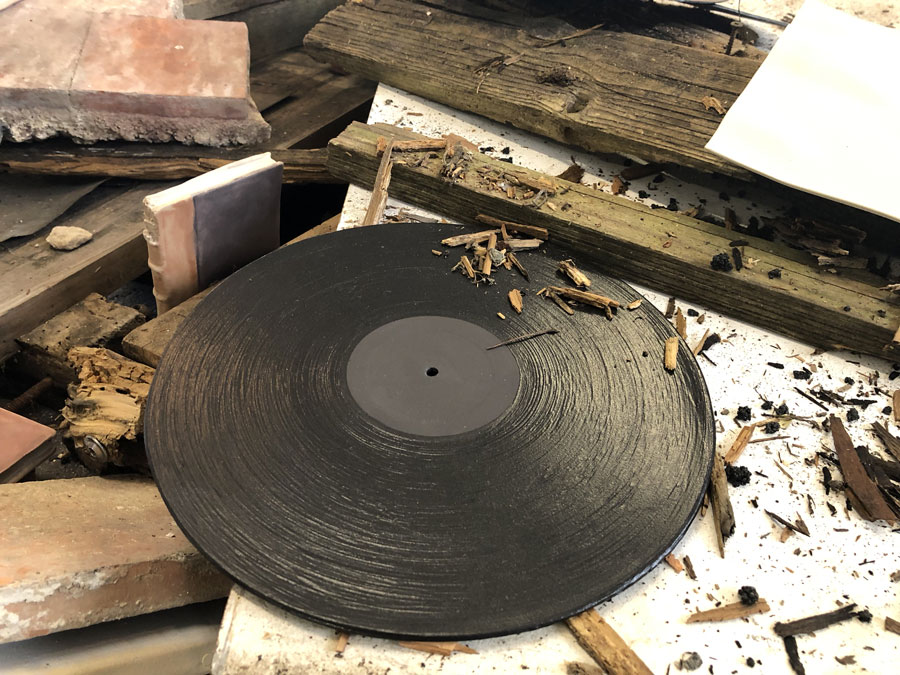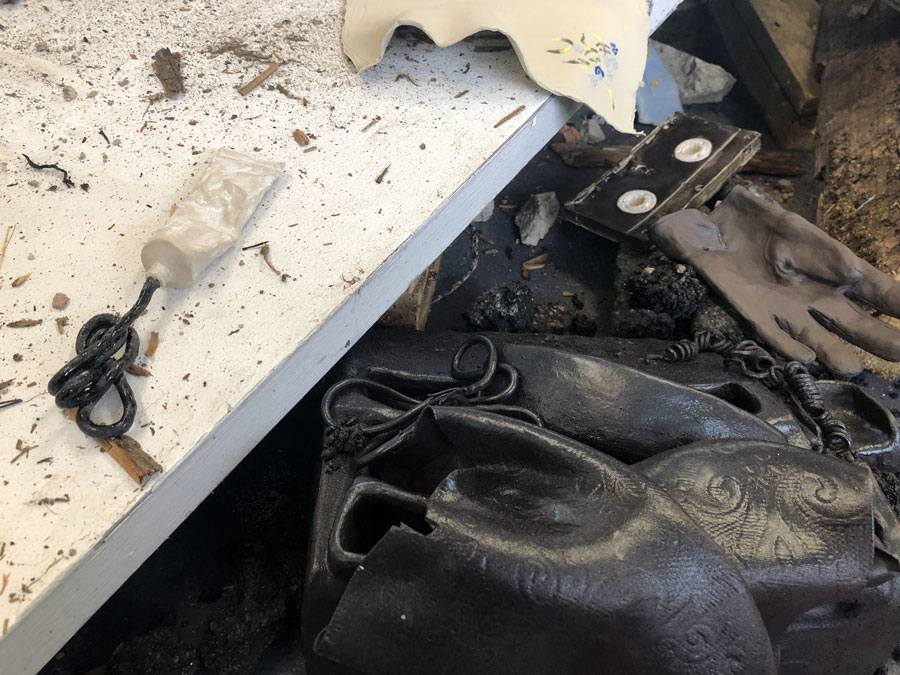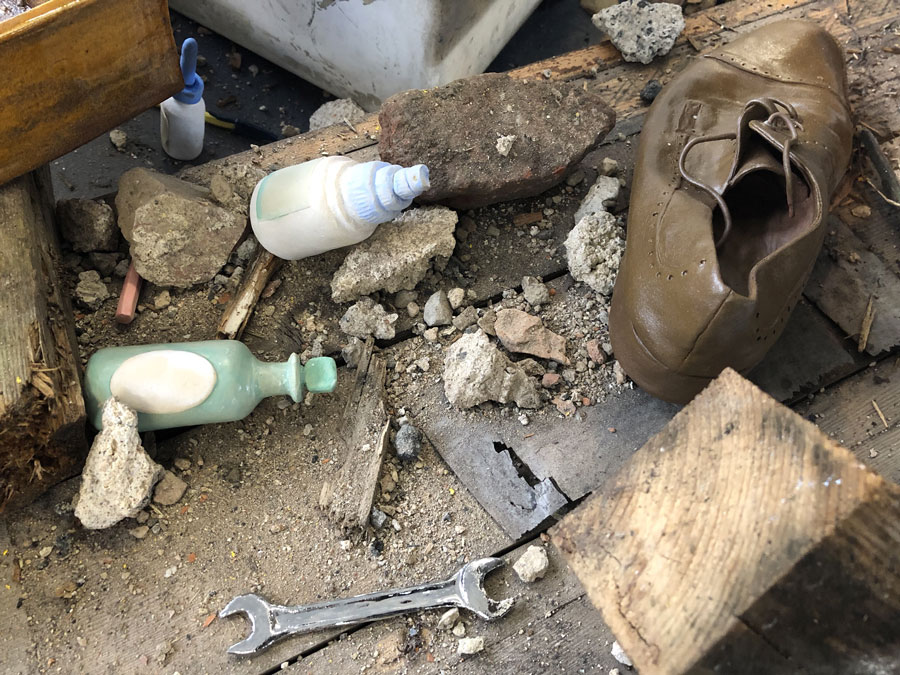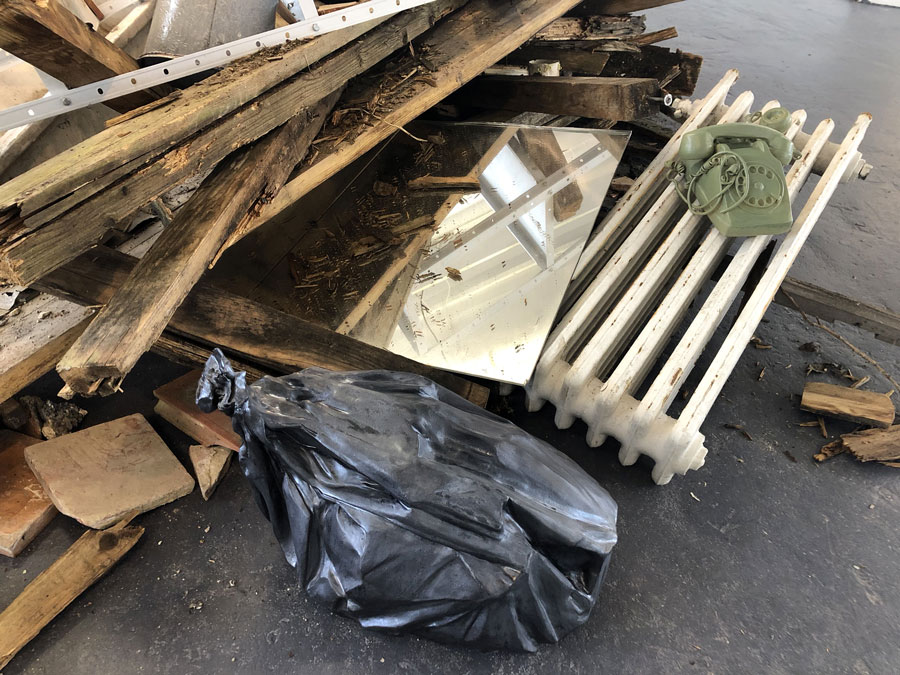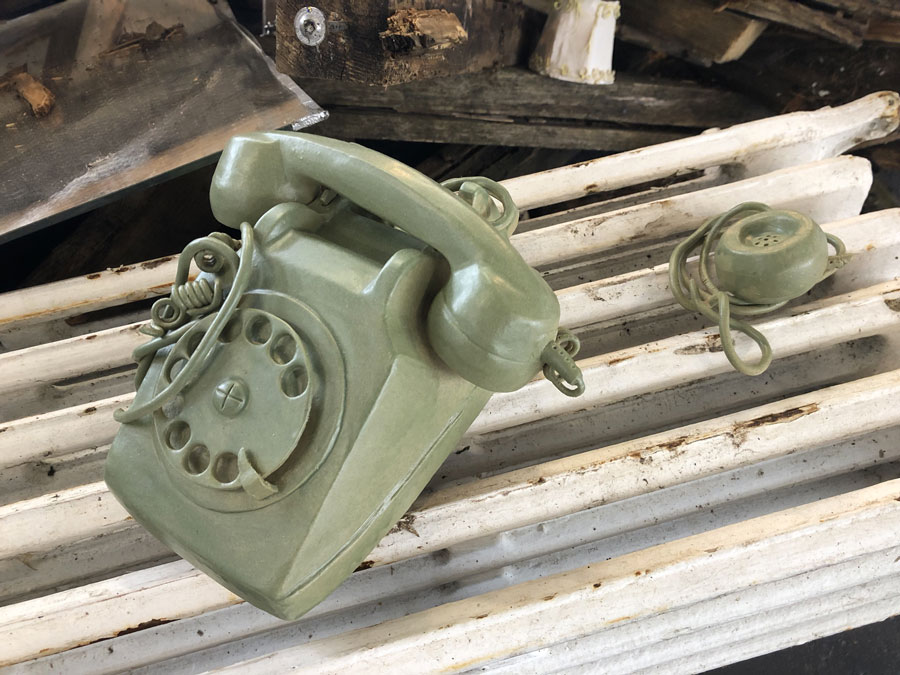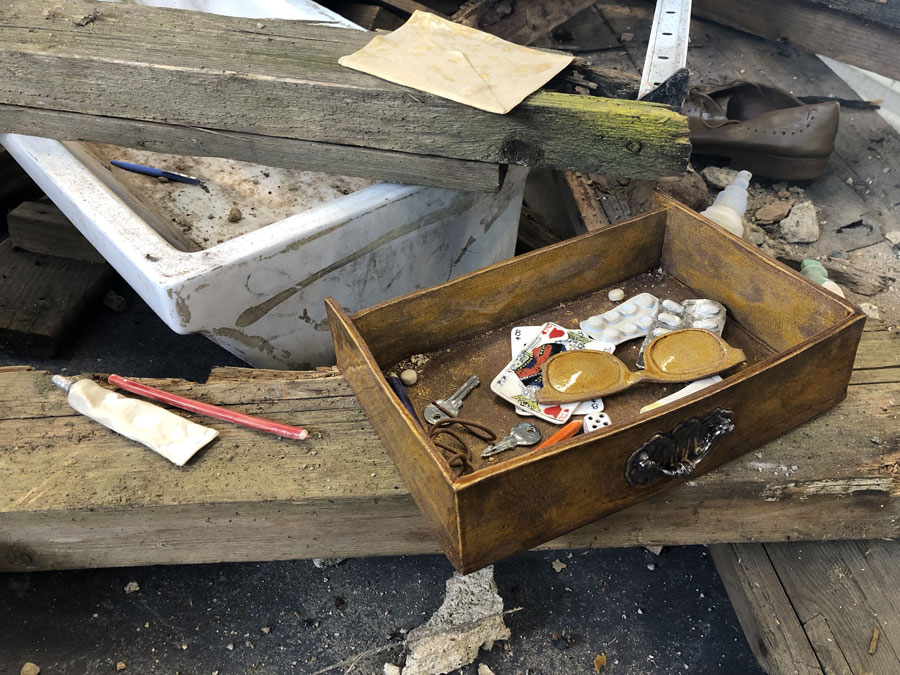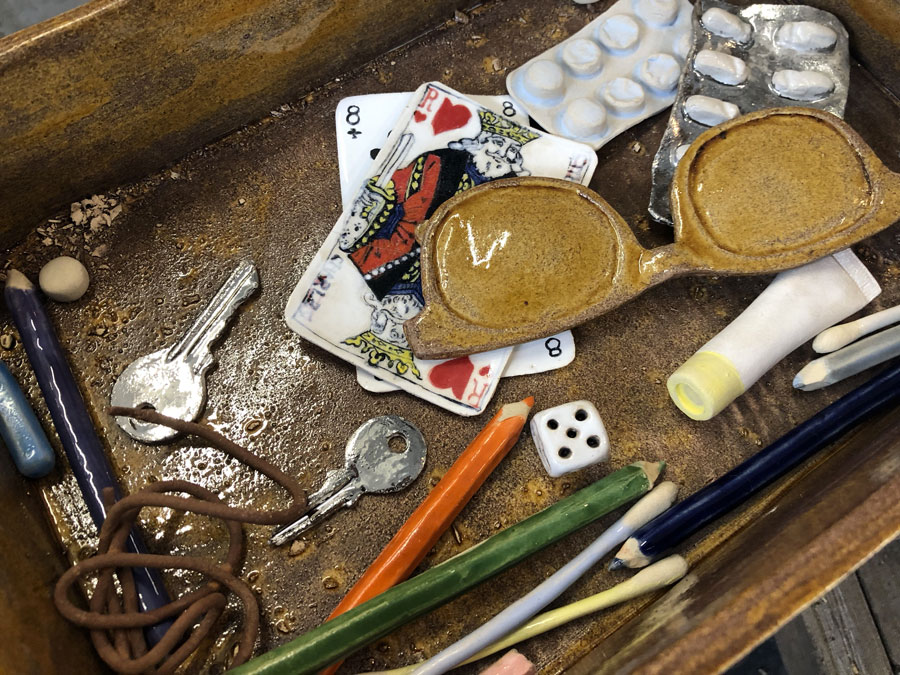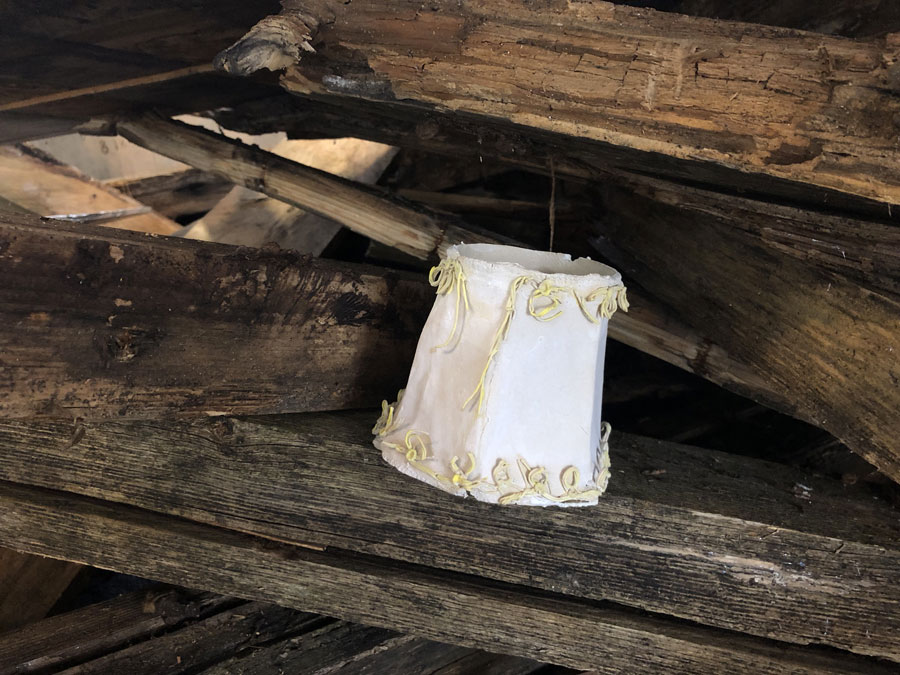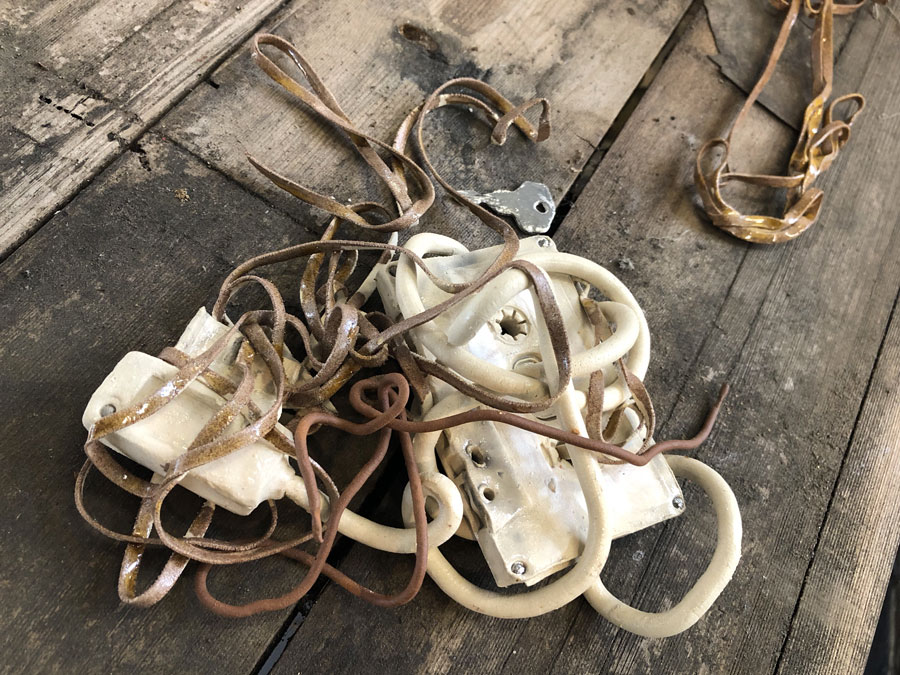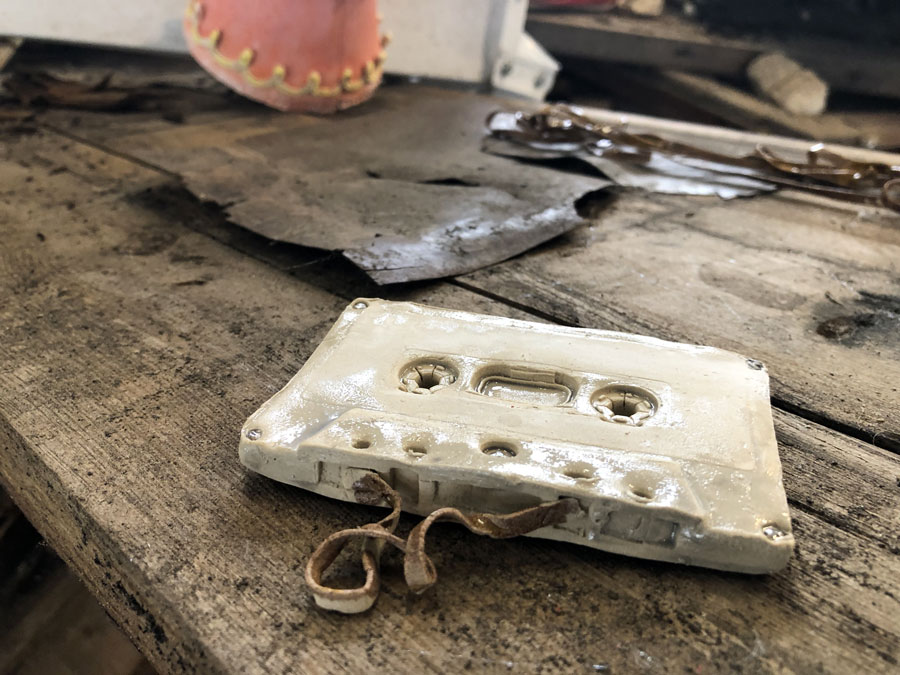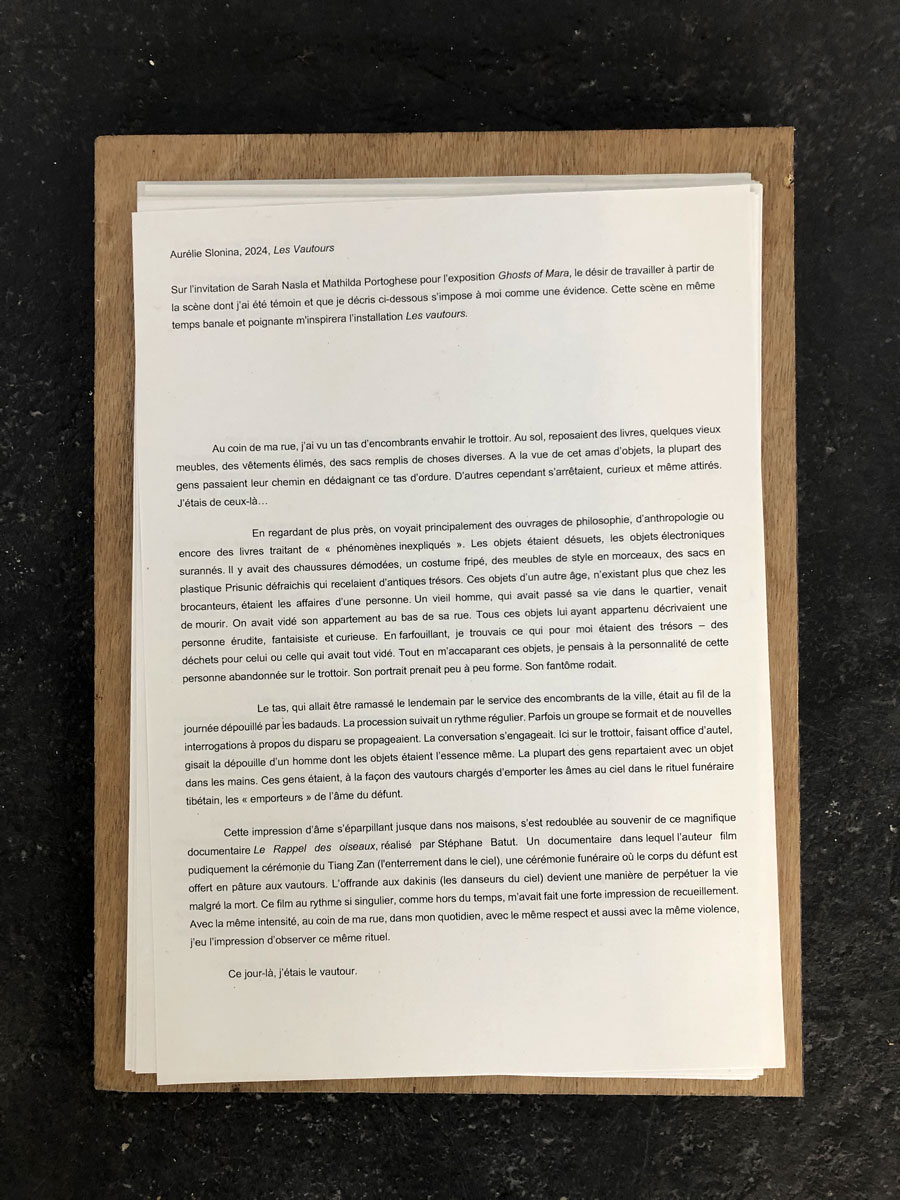The vultures, 2024 |
|---|
Glazed stoneware, gold and silver lustre / scrap building materials / Variable dimensions |
|---|
Exhibition Ghosts of Mara, Le 6b, invited by Sarah Nasla and Mathilda Portoghese.
On the corner of my street, I saw a heap of clutter invading the sidewalk. On the ground lay books, a few pieces of old furniture, discarded clothes and bags filled with various items. At the sight of this heap of objects, most people went on their way, disdaining the garbage. Others, however, stopped, curious and even attracted. I was one of them... On closer inspection, we saw mainly works on philosophy, anthropology and “unexplained phenomena”. The objects were obsolete, the electronics outdated. There were old-fashioned shoes, a crumpled suit, shabby furniture and faded Prisunic plastic bags holding ancient treasures. These objects from another age, now only found in second-hand shops, were one person's belongings. An old man, who had lived in the neighborhood all his life, had just died. His apartment down the street had been emptied. All these objects that had belonged to him described a person who was erudite, whimsical and curious. As I rummaged around, I found what to me were treasures - garbage for the person who had emptied everything. As I hunted for these objects, I thought about the personality of the person abandoned on the sidewalk. His portrait was gradually taking shape. His ghost was lurking. The heap, which would be picked up the next day by the city's bulky goods department, was stripped of its contents over the course of the day. The heap, which would be picked up the next day by the city's bulky goods department, was stripped of its contents by onlookers as the day progressed. The procession followed a regular rhythm. Occasionally, a group would form and new questions about the missing man would spread. Conversation would ensue. Here on the sidewalk, serving as an altar, lay the remains of a man whose objects were his very essence. Most people left with an object in their hands. These people were, like the vultures charged with taking souls to heaven in Tibetan funeral ritual, the “carriers” of the deceased's soul. This impression of souls scattering into our homes was redoubled by the memory of the magnificent documentary “Le Rappel des oiseaux”, directed by Stéphane Batut. In this documentary, the author discreetly films the Tiang Zan ceremony (burial in the sky), a funeral ceremony in which the body of the deceased is offered to the vultures. The offering to the dakinis (sky dancers) becomes a way of perpetuating life despite death. This film, with its singular, timeless rhythm, had left me with a strong impression of contemplation. With the same intensity, on my street corner, in my daily life, with the same respect and also with the same violence, I had the impression of observing this same ritual. That day, I was the vulture.
The installation consists of the remains of a building (fragments of walls, bricks, doors), with objects mixed in between, modelled one by one in stoneware and then glazed, representing the personal effects of the occupant of the premises.
|
